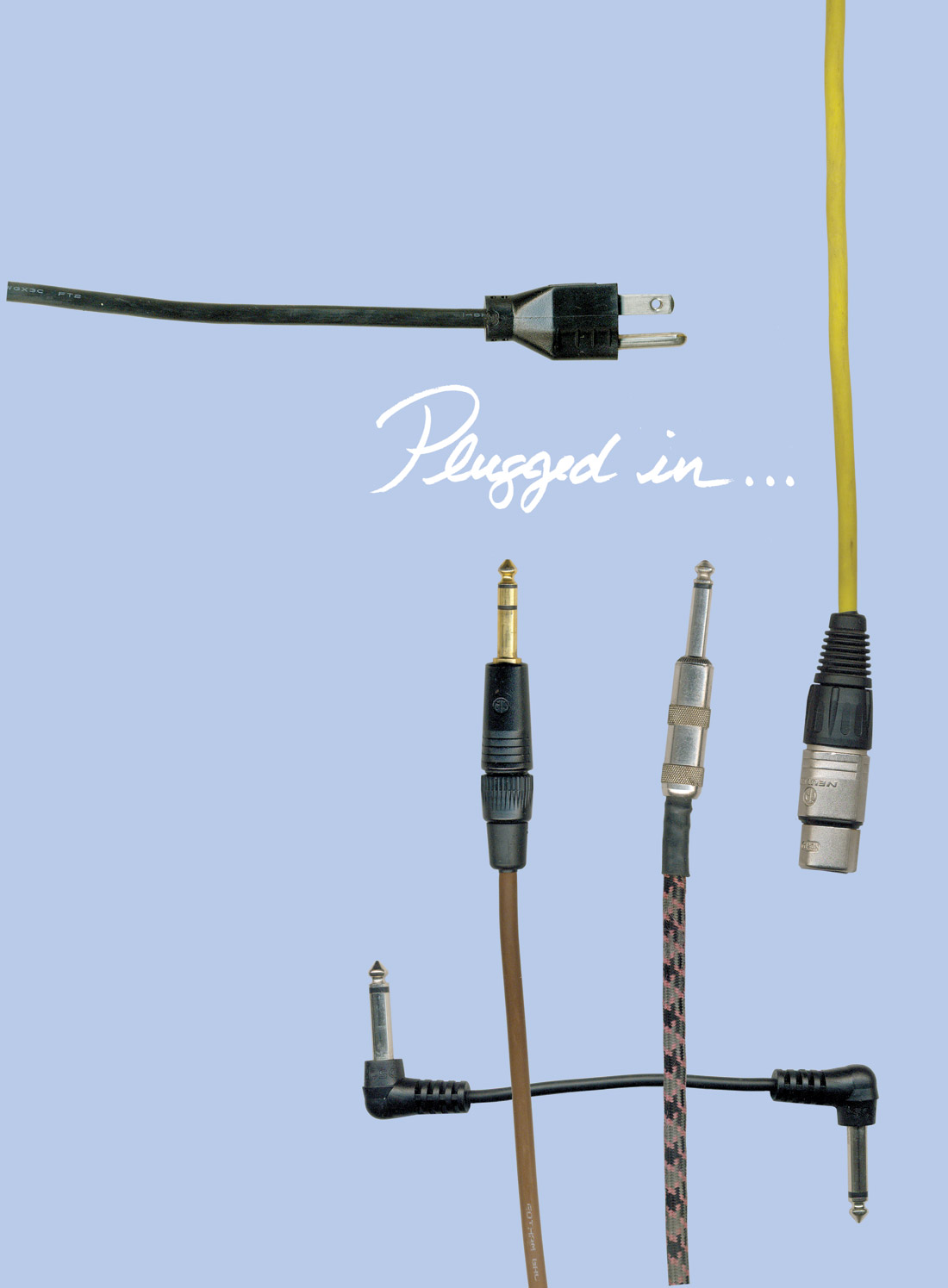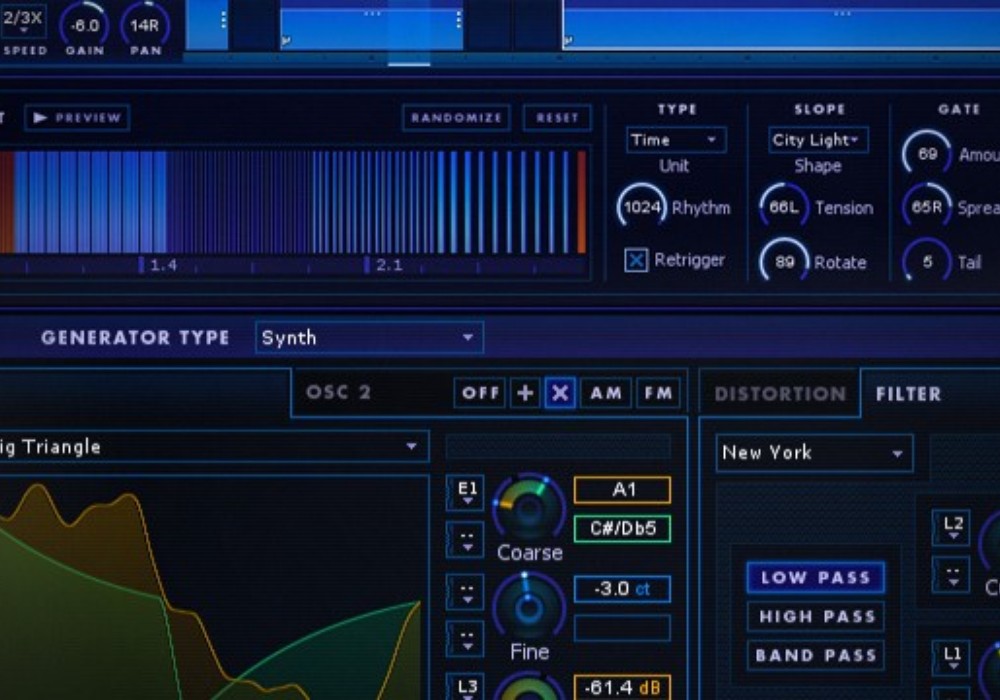If you've heard of Steven Slate and his sample libraries, you're aware of one thing; Steven Slate loves drums. All kinds of drums - big ones, small ones, drums up close, drums far away...... drums, drums, drums.
The Dragon Dynamics Processor is the first offering from his new hardware company, Slate Pro Audio. Made entirely in the USA in Wisconsin and Los Angeles, the Dragon is designed around his love of old FET compressors and a serious long-term relationship with another more modern compressor known for its distortion. This is way more than a drum box and definitely dialed in by dudes serious about their compression coloration. It sounds great on anything and everything. Slate set me up with two units so I could try them in stereo, and that was a smart move. The only thing better than a Dragon would be two of them.
The desire to have a box do "everything" while offering a sane number of controls is a tricky balance. Too many bells and whistles, and the user is lost in minutia, and the workflow suffers. Too little, and the designer misses the full range of capability from the circuitry. The Dragon manages to combine what would be a great sounding straightforward FET compressor on any level with a control set that drastically changes the overall characteristics of the unit quickly, without making the experience too confusing. I was able to navigate it all pretty easily on the first day, even though some of the options really color the sound. I think it's because everything here does something and does it really, really well. This box sounds great, and with all those switches and knobs, the available tone options are staggering. When you start to dial in heavier levels of compression and saturation, an amazing amount of sonic flexibility is at play.
There are input and output level controls; variable attack and release controls; and a six-position knob with all the classic 1176 ratios. A switch labeled Squash is the classic "all buttons in" feature with a twist; it can be engaged at any ratio. It was my favorite at 2:1, boosting the level quite a bit but riding the waveform in a manner that brought out loads of detail on a drum bus, shimmer on acoustic guitars, and a pleasing buzz to electric guitars. Highly recommended to try, it was like catsup or BBQ sauce - good on everything. The detection circuit has an adjustable six-position high-pass filter on it, helping kick drums pass through, but also great for adding weight to acoustic guitars. There's a Vintage switch that changes the way the whole unit reacts and is a bit harder to qualify. In certain situations, notably drums, engaging this switch increased the amount of compression, affected release time, and brought the midrange forward. Slate says that the switch engages a different output board, and it does change what's going on pretty drastically. Vintage, schmintage, who cares? With one flip of a switch, the whole game changes, and you have another set of sounds.
Sitting at the heart of the Dragon, a four-position Saturation knob allows for adjustable amounts of pleasing (that's an understatement) overdrive; this knob is one of the crucial adjustments for dialing in character. Triggered primarily by transients and less by sustained information, the distortion ranges from a mild tonal change at position 1 to a more aggressive buzz at position 3. While trying to dissect the more fuzzed-out upper levels of the Dragon, I was at a loss for a direct comparison, as it does have its own, unique, distorted tone. The breakup is occasionally centered maybe just a tad too high frequency-wise for my wants and desires, making me wish for a level "4", but this is a compressor, not a fuzzbox. But then again you may begin to wonder.
There are three EQ boost switches - Sheen, Bite, and Boom - and they sit right where you think they would. These boosts are in the audio path, not in the detection circuit, and while useful, I didn't find myself engaging them that much. They seem more like a quick fix and were just a bit more than I wanted most of the time. There were other more fun ways to shape sound with the Dragon - just start digging through the Squash and Vintage switches and the HPF and find yet another awesome sounding compression shape. Although, those switches could be last minute mix lifesavers, for sure.
With all of these tone options and the ability to drive the compressor happily bonkers, the onboard mix control - allowing the dry to be added back in - is really, really useful. But the switch to disengage the parallel compression mixer, so you can A/B fully-processed with a mix of processed and dry? Completely essential. Super smart.
In use, the Dragon easily became a first-choice compressor during overdubs for acoustics, electrics, and percussion. A deadly tell for compressors for me is how they handle the transients of tambourines, and the Dragon kept the initial hit clamped down just right so I could blend hits with snares and focus on the business end of the jangle. On electric guitars, I was impressed with the open and clear compression that could be dialed in. Once I got a mic/amp combo that I liked, finding the right level of compression activity seemed simple. Making sounds with this box is a breeze.
During a mix for San Francisco's Papercuts, the Dragons did a great job in stereo on the drum bus. Jason Quever, main Papercuts architect and a serious and picky recording dude in his own right, loved them. Jason has an intensely monogamous relationship with an old, mojo-laden, silver-face 1176 that we used on a mono overhead during tracking and was a primary part of the drum sonics. We had been careful during basics not to push the 1176 too hard, and I could tell Jason wanted to bring out more of that particular "bloom" that he loved, but we had been cautious not to overdo. This was a situation where we already liked what we had and just needed the right extra oomph. The Dragons easily matched and enhanced that tone during mix, allowing us to really get a ton of depth and detail from the drums without them sounding overcompressed. Drum mixes came up easily; the wide range of compression curves on hand made experimentation fun and helped the mix flow easily. One way or the other, there was always some simple way to get at a particular frequency range or transient shape.
One peculiarity that arose was in the gain-reduction metering. Initially warned by Slate to turn the units on for 15 minutes at the beginning of any session and let them sit before use to allow that circuit to warm up, the GR metering for the first few days was odd in certain settings and unusable at times, but after the units had a solid week of burn in, everything was fine. I was told that there have been changes in this circuit, so that will probably not be an issue for anyone else.
My only real gripe is a purely aesthetic one. The Dragon is adorned with a glossy Dragon graphic that is mostly invisible, but truly detracting and kind of horrible looking. But that's just me; I think it looks like a menu from a cheap Chinese restaurant. When I asked Slate if they ever thought about doing a plainer version, they replied, "Well, then they wouldn't be the Dragons." True enough - but trust me guys, you don't need to overcompensate; the compressor is great, it speaks for itself.
Effects, Signal Processors | No. 38
Reverb 4000
by Adam Kagan
We've all become accustomed to the phrase "This is the best processor, mic, etc. for under x thousand dollars." We have also come to realize what that phrase means: The item doesn't sound quite as...





_disp_horizontal_bw.jpg)